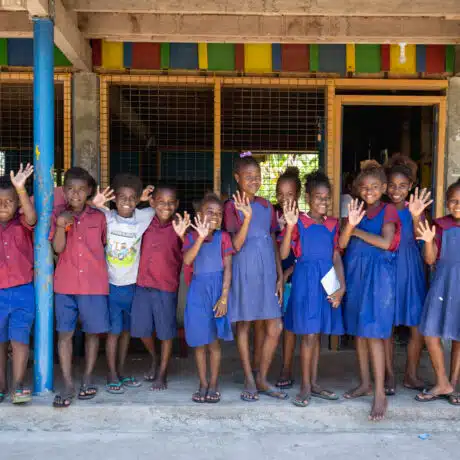News and Stories - Climate Change - 4 June 2018
How to talk to your kids about climate change

The effects of climate change are being felt across the globe. Sea levels are rising, islands are disappearing, we’re continuing to break record after record with extreme temperatures. And the people who are most vulnerable to its effects are children who are at risk from diseases, disasters and displacement which will only increase with the changing climate.
It’s a pretty scary future we’ve left for our kids, and one that can leave them feeling disempowered to do anything about it. It’s important when starting any conversation to make sure they feel heard and like their concerns are understood. We also want to reassure them that there are ways they can help protect their environment.
So how can we help kids have a say in their future, care for the environment and help reverse the impacts of climate change?
1. In day-to-day life
We have the chance to make greener choices every day. We can walk, cycle or catch public transport instead of sitting in traffic. We can encourage our kids to turn off their screens and play outside, which is not only saving on electricity, it’s getting kids to better understand the environment around them. We can use reusable drink bottles and say no to plastic bags.
2. At home
There are more and more apps on going waste free in the home and solutions to reducing waste. Get your kids on board to show them tangible ways they can help protect the environment. Recycle, start a veggie garden and compost, turn off lights when you leave the room and keep electronic devices off during the day when you don’t need them. Eat fruit that’s in season and talk to your kids about how far that piece of fruit has travelled to reach their mouths (no doubt they might find a solid argument in there as to why they shouldn’t eat fruit – we’ll leave that one up to you!). Encourage them when they’re environmentally minded: “it’s so great you’re not wasteful!” or “It’s great that you care about the environment.”
3. At school
Change starts with communities. Encourage your kids to take what they’ve learnt to school. Ask your school if they include climate change in the curriculum. Ask if they’re harvesting rainwater from the roof, or growing veggies, or encouraging recycling.
4. Let them know they’re not alone
The doom and gloom of the media cycles can make things look hopeless when it comes to climate change. Let your kids know that while they’re playing an important role to protect their environment, they’re not alone. Organisations like ours are working with children all over the world who are vulnerable to the effects of climate change, and we’re seeing encouraging results.
“We are doing coastal clean-ups and planting mangrove trees on the beach.” 15-year-old Louisa is a climate change activists. Her town in the Philippines was badly hit by Typhoon Haiyan. . “We experienced the typhoon in 2013 and now we fear losing our homes as the shore is slowly being eaten away by the sea. If we do not do something, we might be homeless in the future due to coastal erosion.”
So Louisa and other children and young people in the Philippines are taking action to reduce the impact of climate change by becoming voices of change and leading environmental activities in their towns.
We have a global responsibility to tackle climate change, not just for our kids but for children everywhere who are already feeling the effects. But we’re not alone. All over the world communities are taking action to mitigate the effects. There are plenty of reasons to be hopeful about our future and while the burden shouldn’t sit with our kids alone, we can help them be well equipped to make a difference.
We’re bringing together a community that is raising global citizens by sharing knowledge and experiences and empowering young people to reach their full potential. If you’d like to be a part of it, sign up here.


